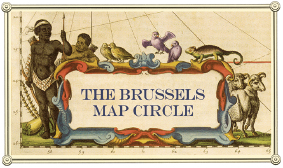The Portolan, Issue 113 (Spring 2022) published
Read more.
Posted on

Posted on
Posted on
Posted on
27 December 1951 – 10 May 2022
More at home with earlier maps of our cartographic heritage, little did I know about Philippe Vandermaelen (1795-1869), the greatest of Belgian geographers and cartographers of the nineteenth century, until I met Marguerite Silvestre, conservator at the Royal Library of Belgium (KBR).
This happened in 2006 when I got around to studying the Vandermaelen Globe of 1846 at the Royal Museum for Central Africa (RMCA) in Tervuren where, as a volunteer, I was looking after their collection of ancient maps. Lisette Danckaert, former Head of the KBR Map Room, introduced me to her, and this was the beginning of our cartographic cooperation and personal friendship.
Caroline De Candt and Marguerite have admirably described the quest for new discoveries regarding Vandermaelen’s Globes de cabinet in their article 'The Big Four' in Maps in History No 70, May 2021.
Marguerite has devoted more than 25 years of research into the work and life of Vandermaelen, his Établissement Géographique and its enormous range and volume of cartographic products. The resulting Inventaire raisonné des collections cartographiques Vandermaelen à la Bibliothèque royale de Belgique, published by the KBR in seven volumes between 1994 and 2016, reflects her unfailing devotion to this project.
In December 2016, she participated in our Globes and instruments international conference (see Maps in History No 57) and retired at the end of that year. She then turned to working at the Royal Observatory of Belgium in her spare time, until first COVID-19, and then her illness, deprived her of the possibility to continue.
We have lost une Grande Dame – I have lost a great friend.
Posted on
Posted on
Posted on
Posted on
Posted on
Posted on
Posted on